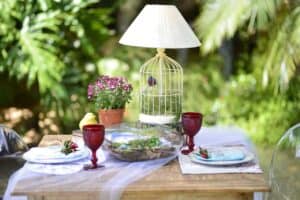AD | Featured
Many households across the United States utilise a septic system. Septic systems are designed for wastewater removal in areas that public sewers aren’t available. They can also be used by homeowners that don’t want to be dependent on the city or would like to not pay a monthly fee for that service.
The nice thing about septic systems is that often they are trouble-free. They don’t require much in the way of maintenance, other than routine pump-outs from your local plumbing company. Septic systems are an excellent option for those that don’t have access to public sewers as a means to deal with wastewater. Knowing more about your septic system can give you an inside look at what to expect when you choose a home with the septic system or need to have one installed.
Drain Pipes
Every home has drain pipes. However, and a septic system situation, drain pipes will lead to the tank buried underground on your property. In a sewer system, the drain pipes will connect to the city sewer system. This will carry wastewater away from your home and to the treatment plant.
Drain pipes are incredibly essential and serve as a critical feature of your septic system. If drain pipes become clogged or broken, it will become a huge mess, and your wastewater will not be able to flow correctly.
The Septic Tank
The most recognizable feature of a septic system is the septic tank. These can vary in size and are placed between 4 inches and 4 feet underground and serve to collect wastewater. Inside the tank, water will separate. It will be divided between wastewater and soil separates, and will create a sludge layer that will decompose inside the container. The sludge and scum layers are permanently prohibited from exiting the tank and leading to the drain field. When you hear about the service of pump-outs, this means that your tank will have the sludge layer removed from the container.
Septic tanks can be made of a variety of materials. Often you’ll see them constructed of polyethene, concrete, or even fibreglass. These are watertight containers and have very minimal components to them.

Does Tank Size Matter?
There are varying sizes of tanks available for properties. From modest 500 gallon tanks to more substantial 1250 gallon tanks, you’ll want to pick one based on your needs and budget. The larger the tank, the less you’ll be required to have pump outs performed. Though for heavy use, you may find that you’ll need Atlanta septic services more frequently no matter what the size of the tank may be. Typically, the more people you have using the septic system, the more frequent you’ll need to address maintenance to the tank.
The Drainfield
The drain field is perhaps one of the more exciting components of the septic system. It is sometimes referred to as a leach field. Here is where water will go to flow from the septic tank. By water exiting the tank, it is allowed to fill further with wastewater. The drain field job is to move the water over gravel, allowing for filtration. Typically drain fields are divided into trenches. Wastewater will then either absorb into the soil, or it will evaporate.
When there is a problem with the drain field, such as a clog, you may notice that areas of your yard become saturated with water. This is typically wastewater, and you will see that grass or any other plant life around it is more vibrant than anywhere else in your yard. Another problem that can happen if your drain field is clogged is water will back up into the septic tank. Further still, the water will keep moving backwards until water is flooding the fixtures inside your home. It’s essential that homeowners are on the lookout for these clogs early on so they can be resolved before the problem becomes more significant.
The Soil
Last but certainly not least, the soil Is a primary feature responsible for further sanitising the water. While water will flow through the leach field and over septic rocker gravel, the soil will act as a final treatment. It will remove harmful bacteria, viruses, and other nutrients to make for reusable water.
























No Comments